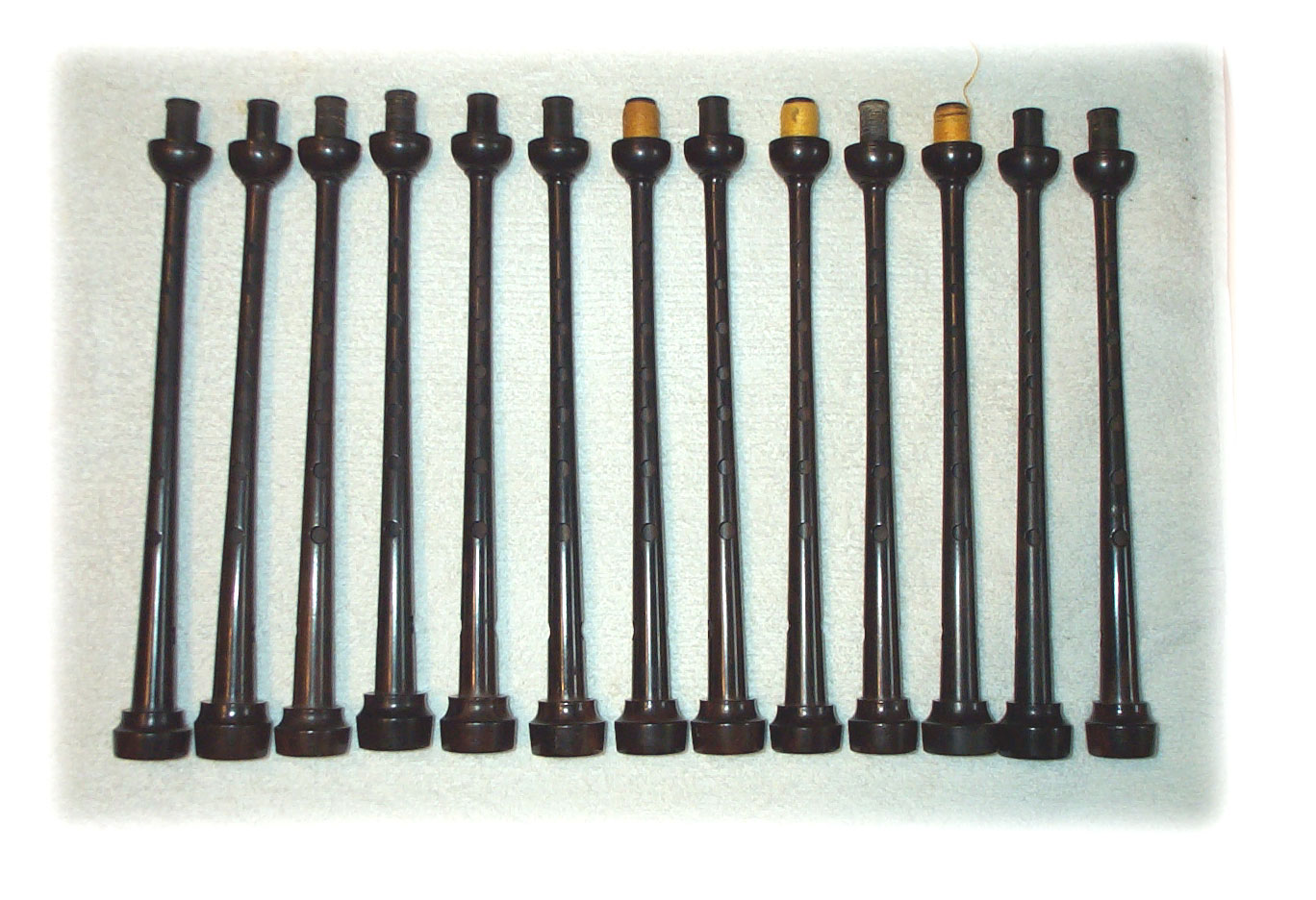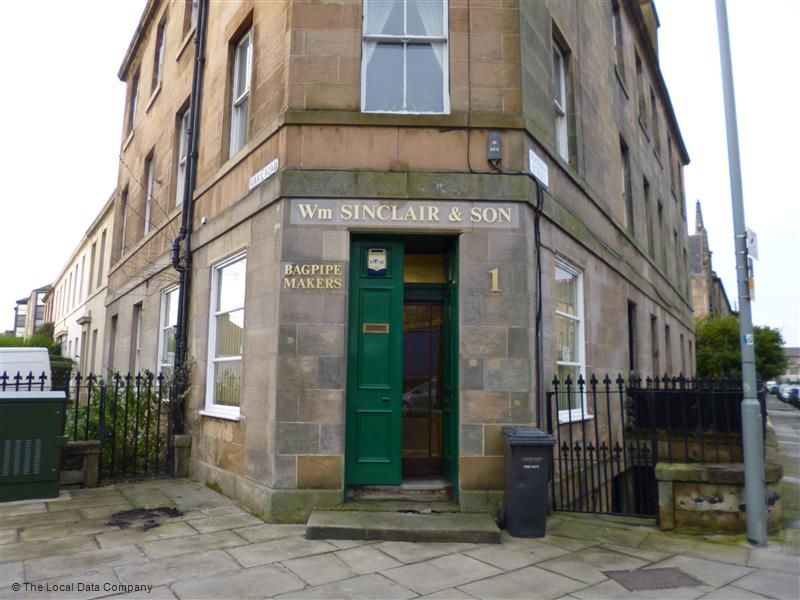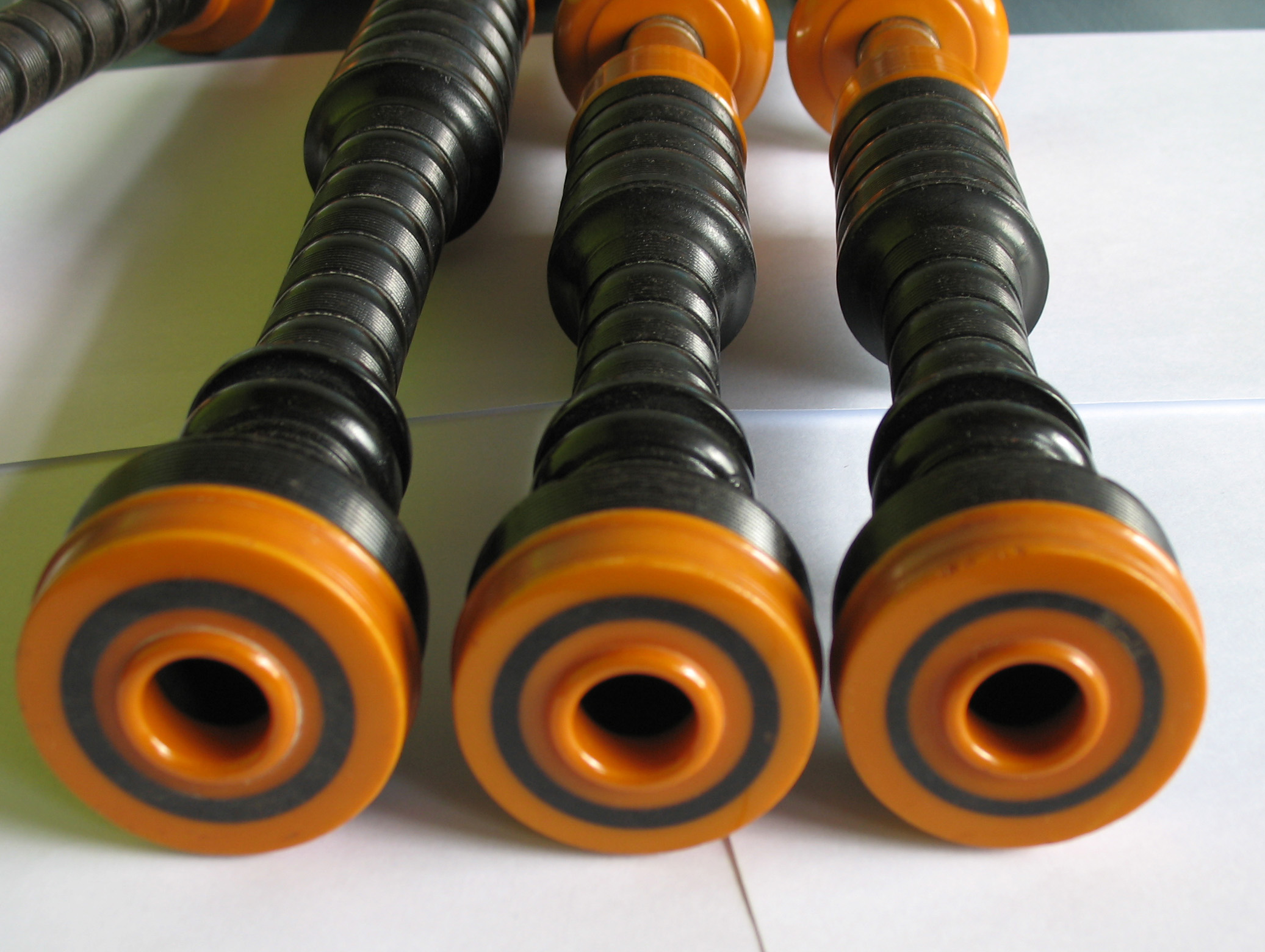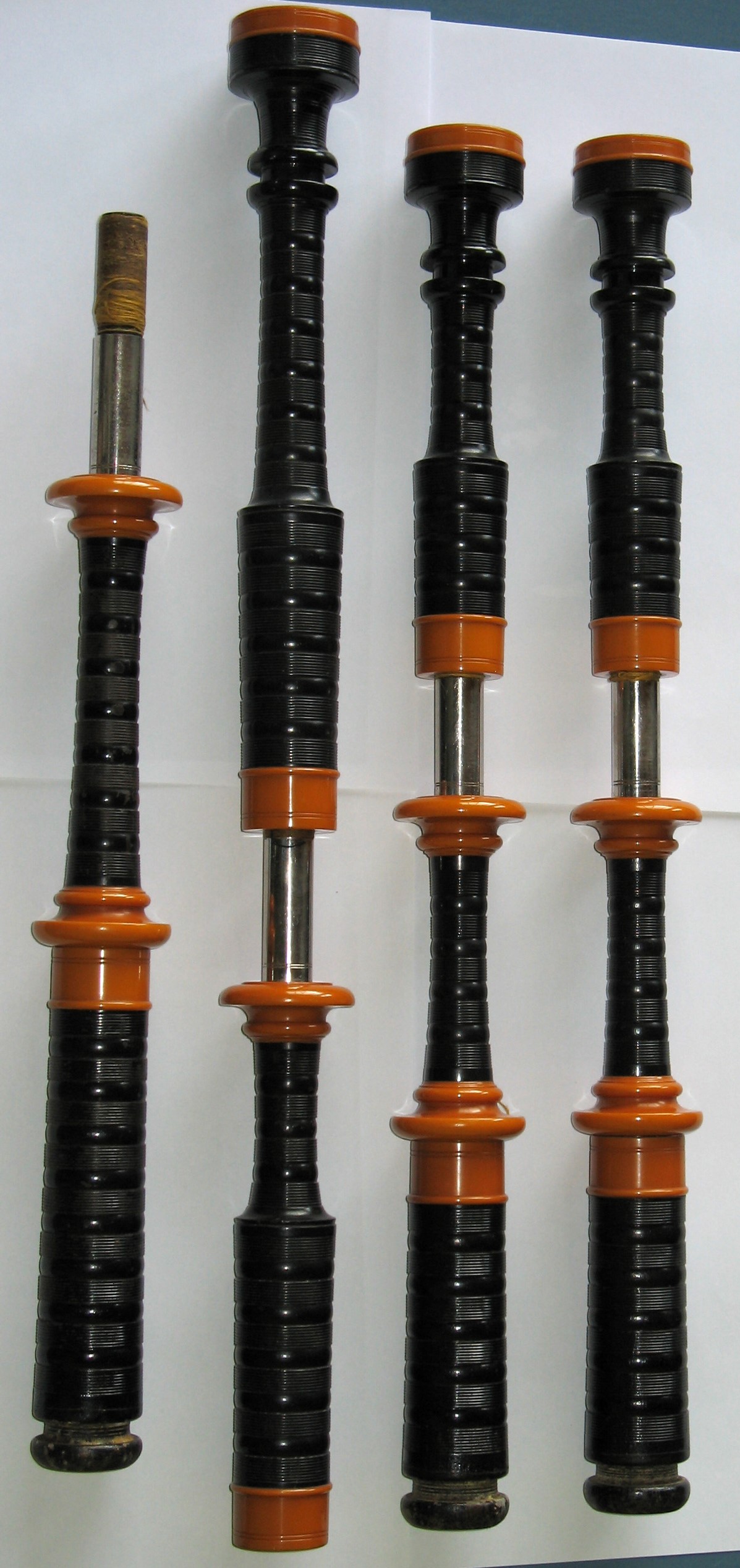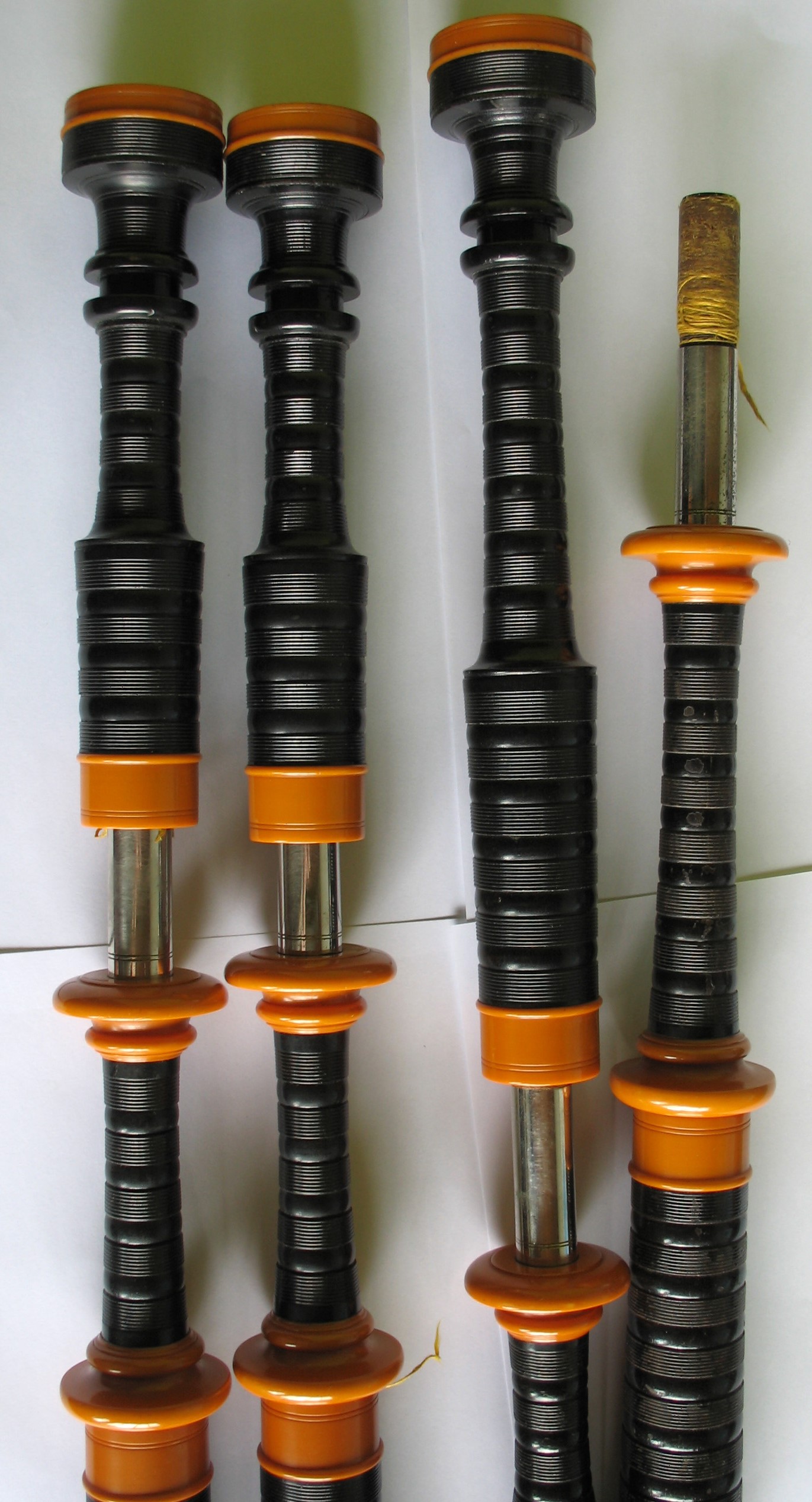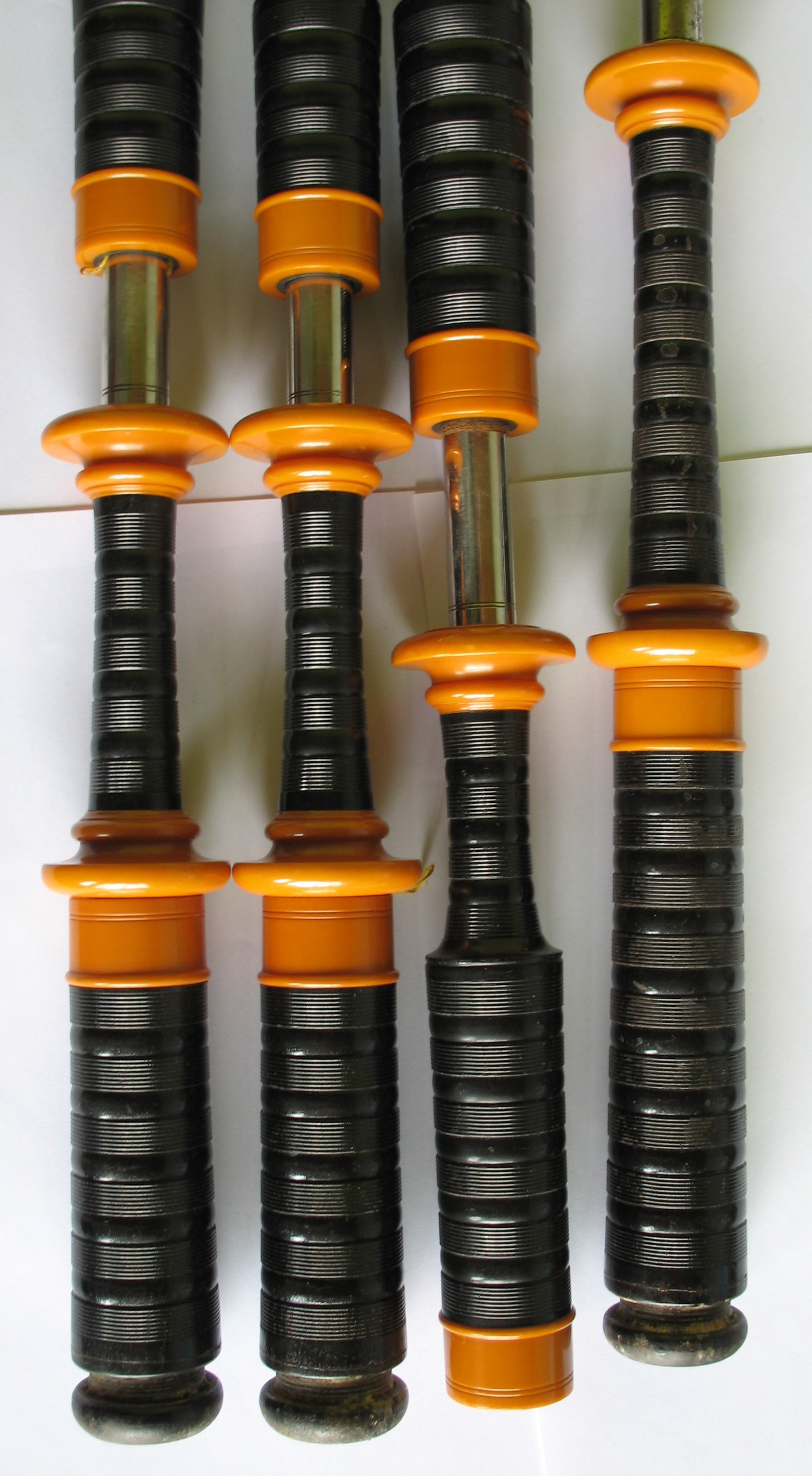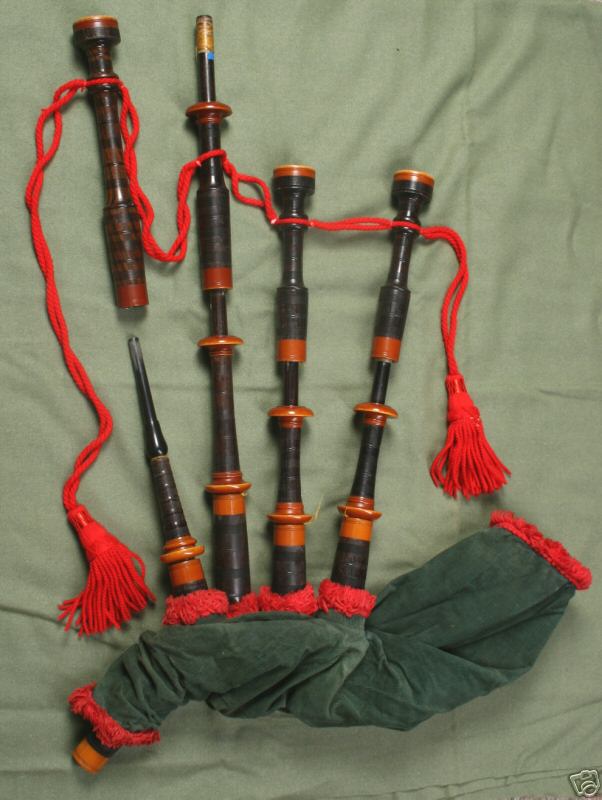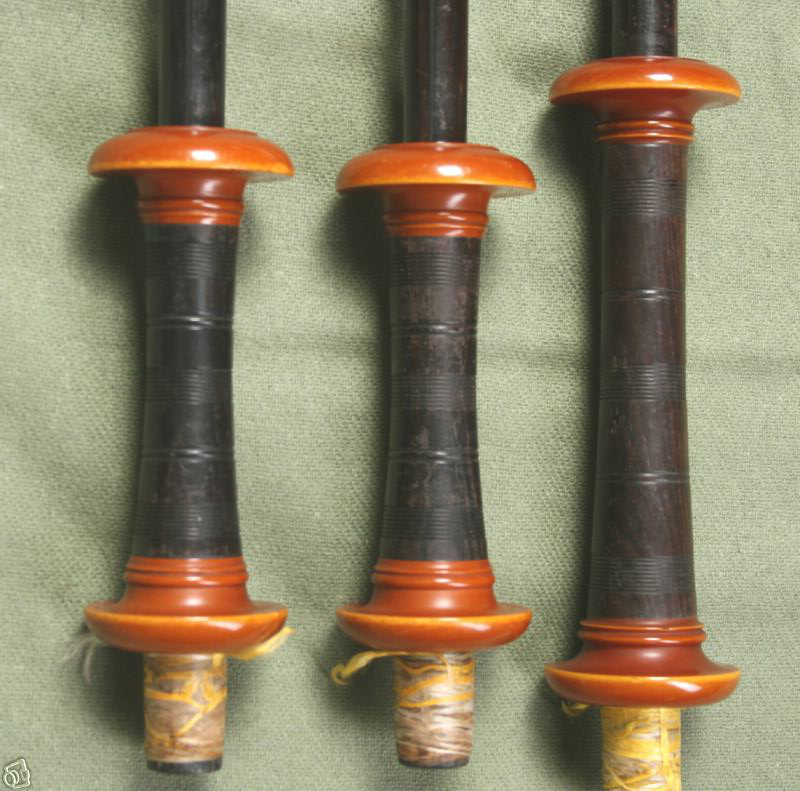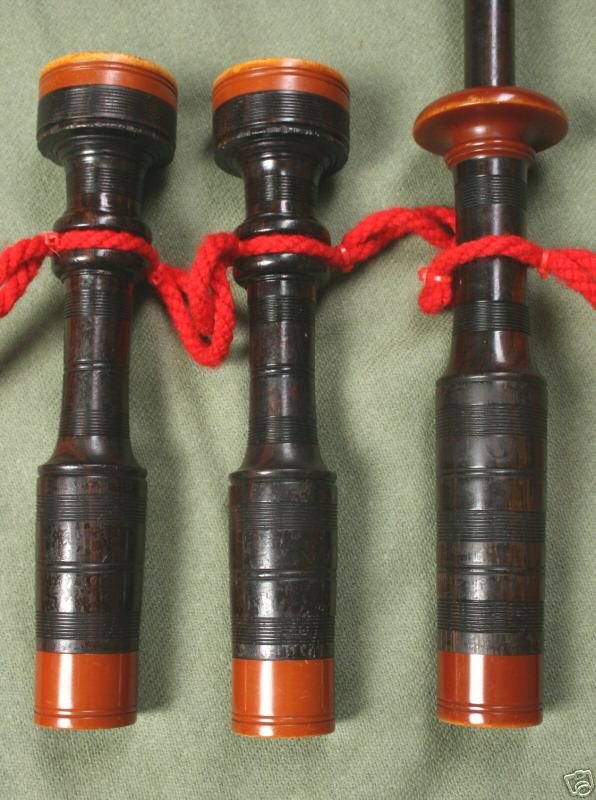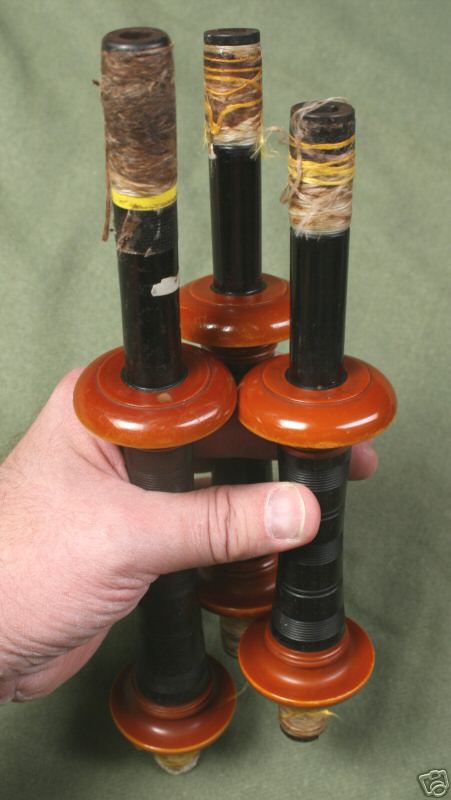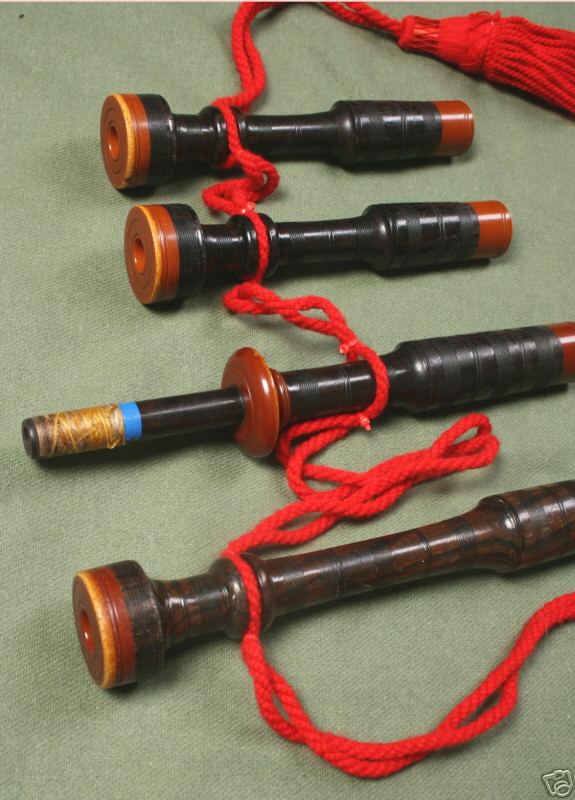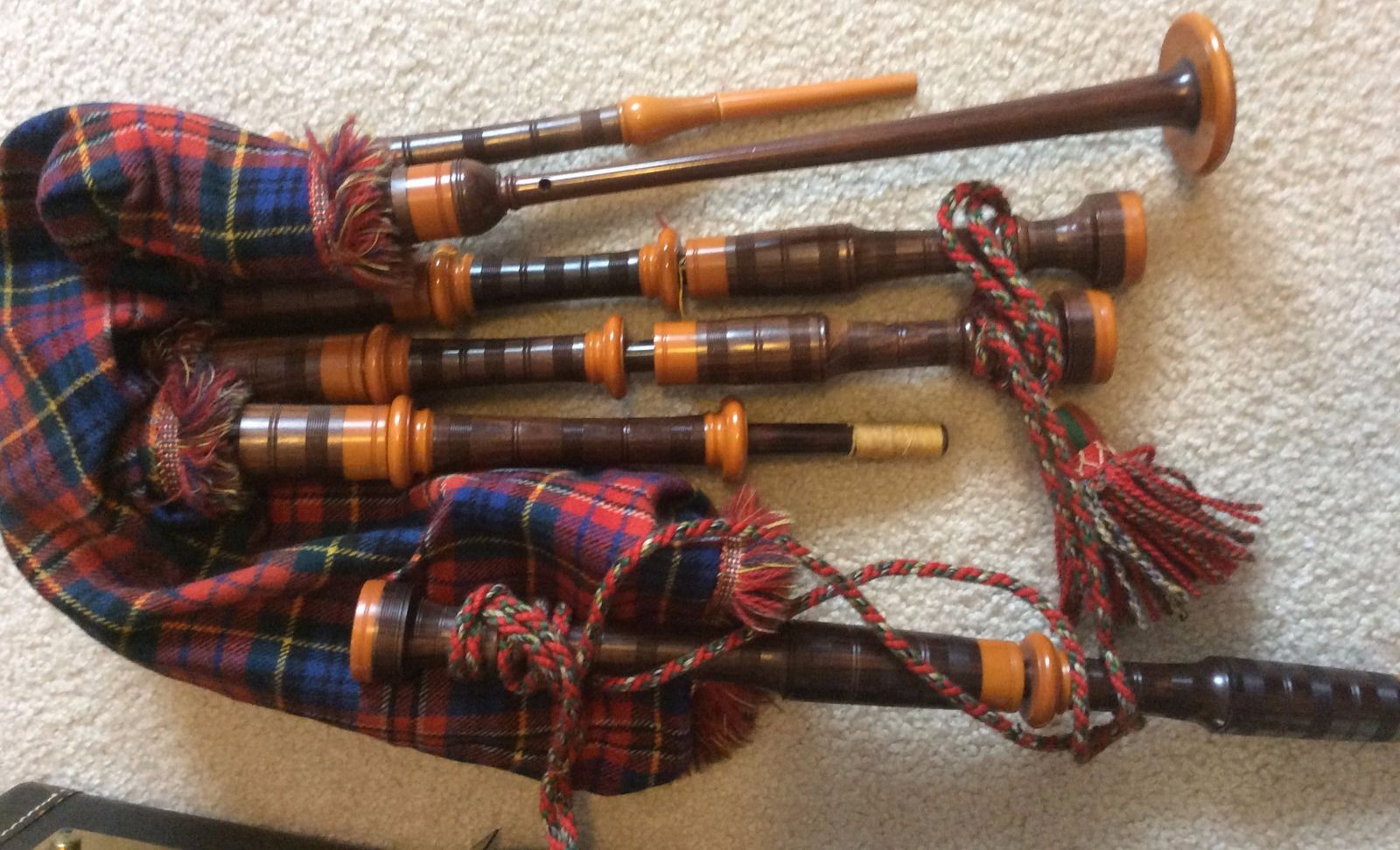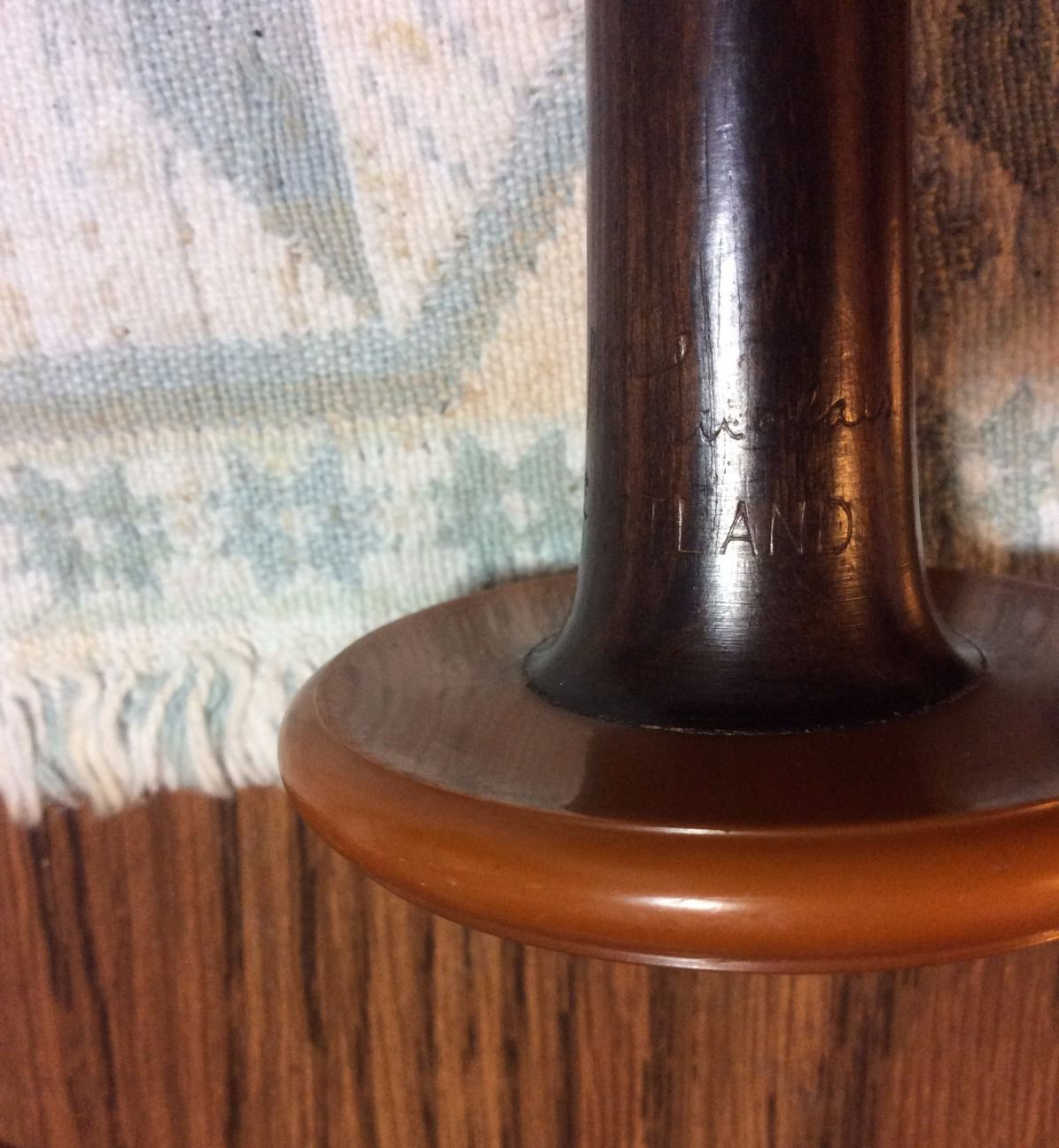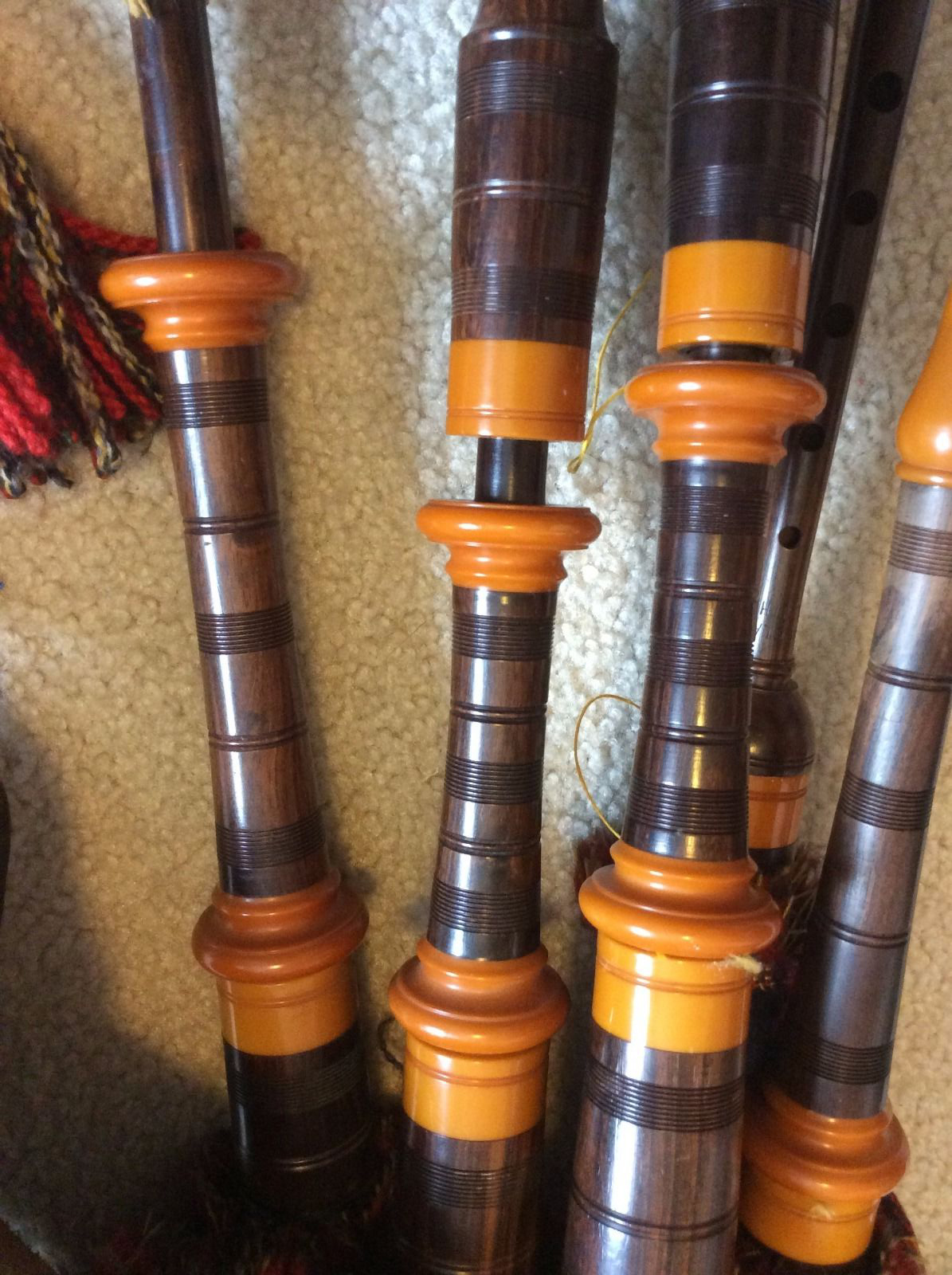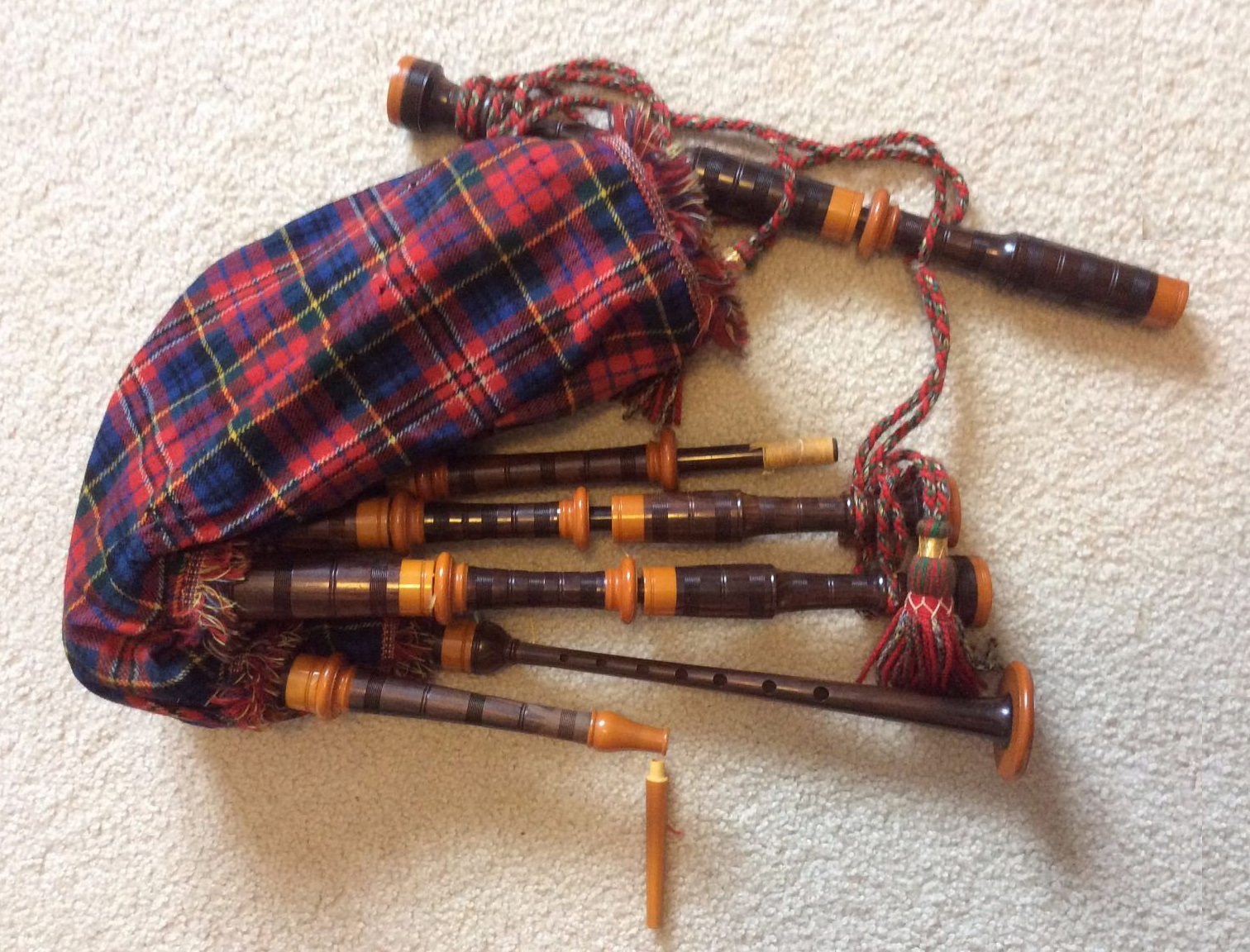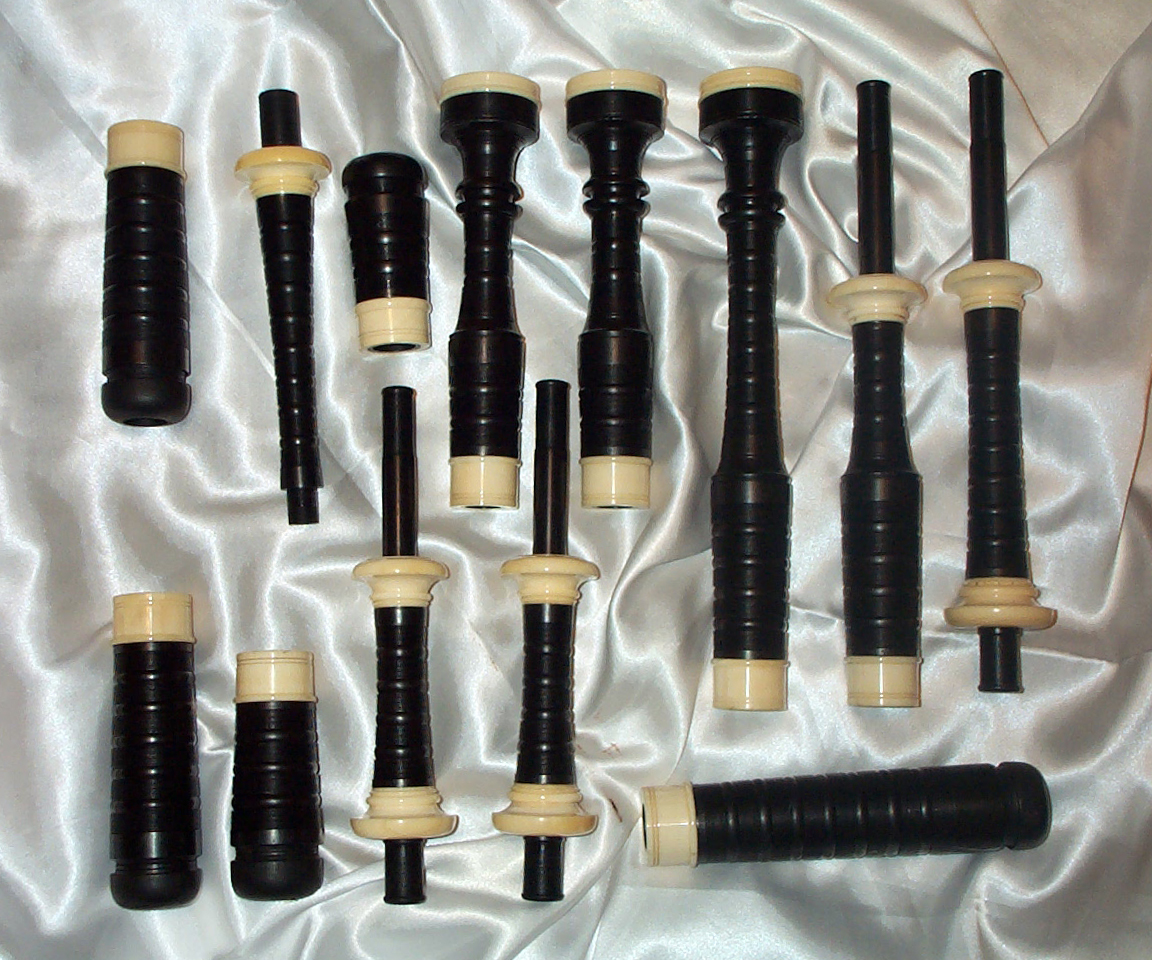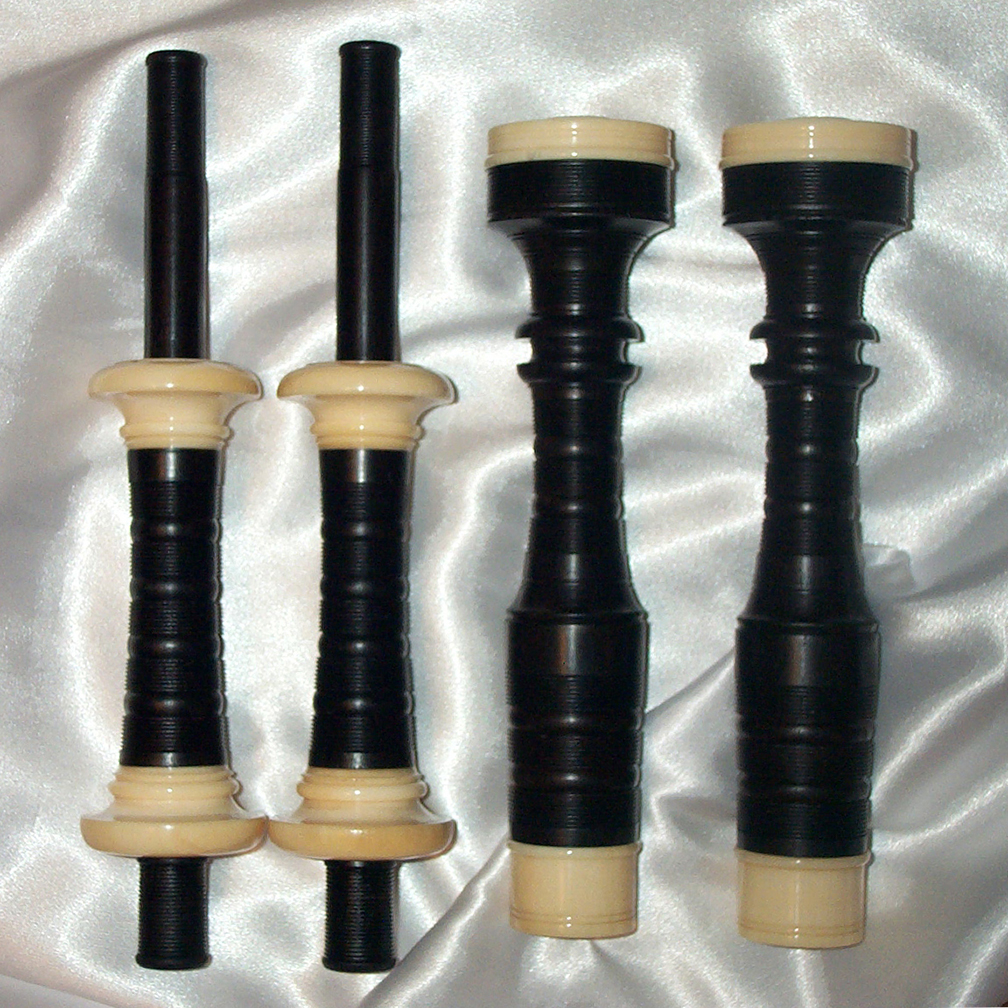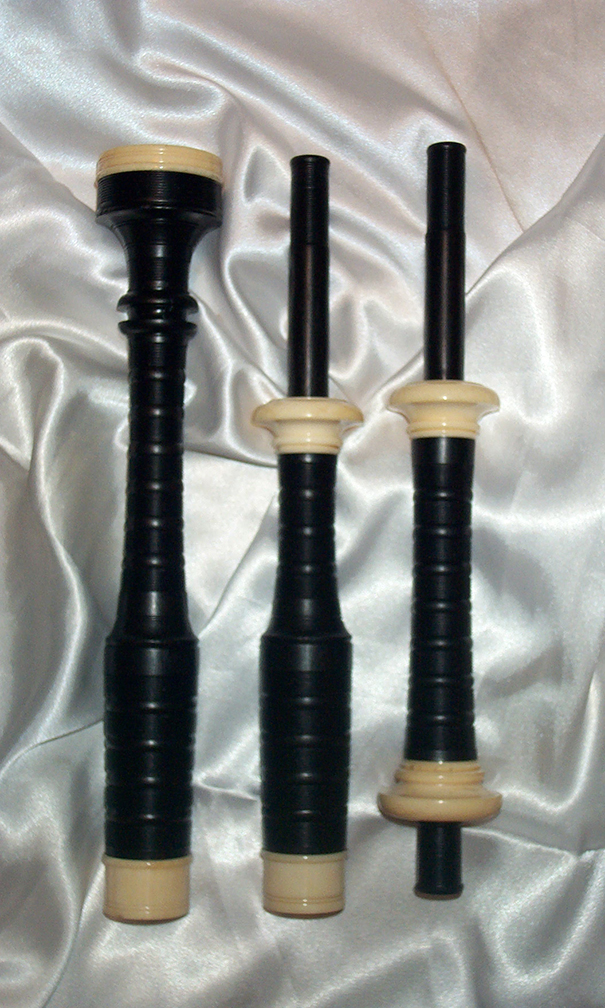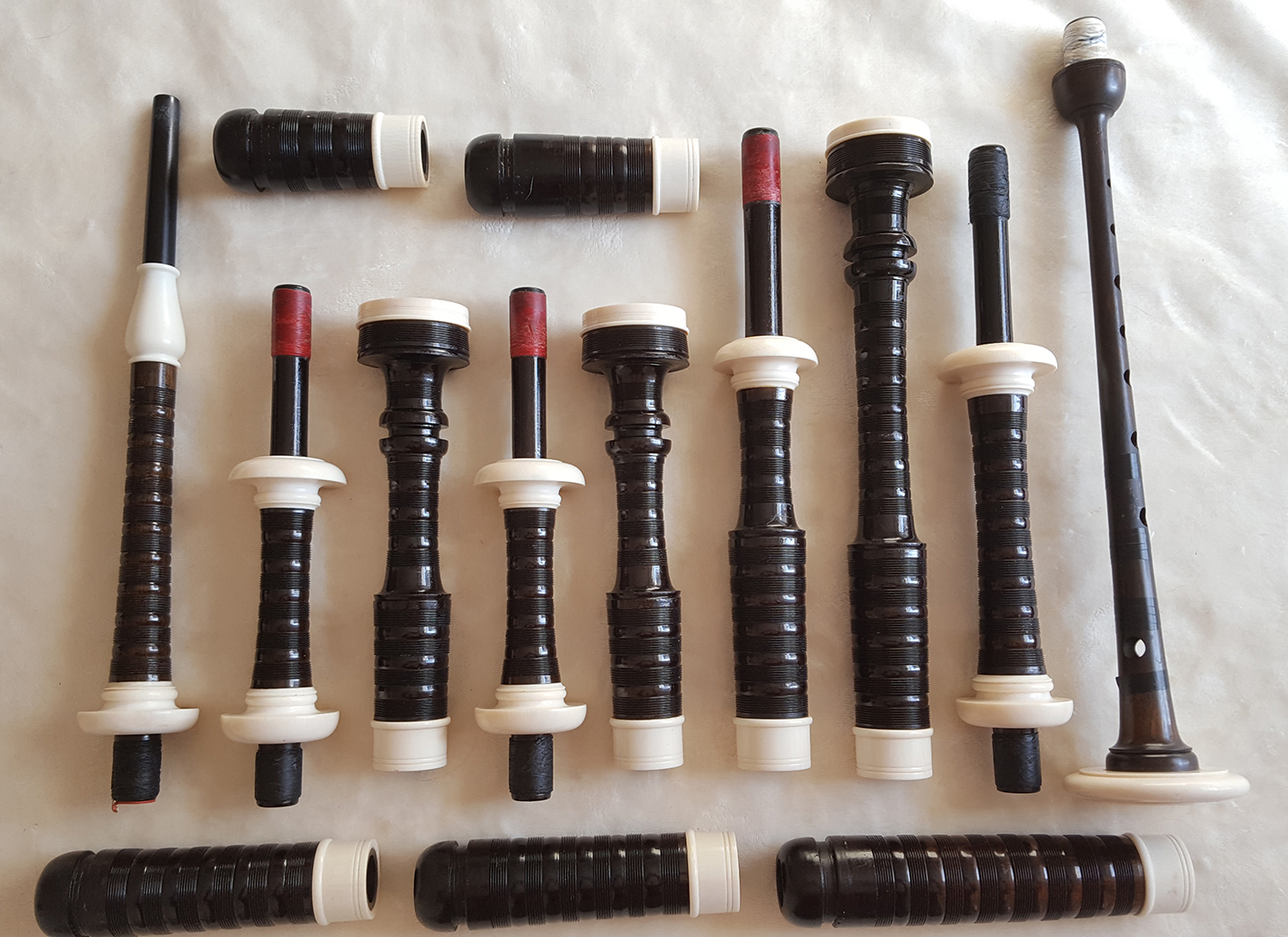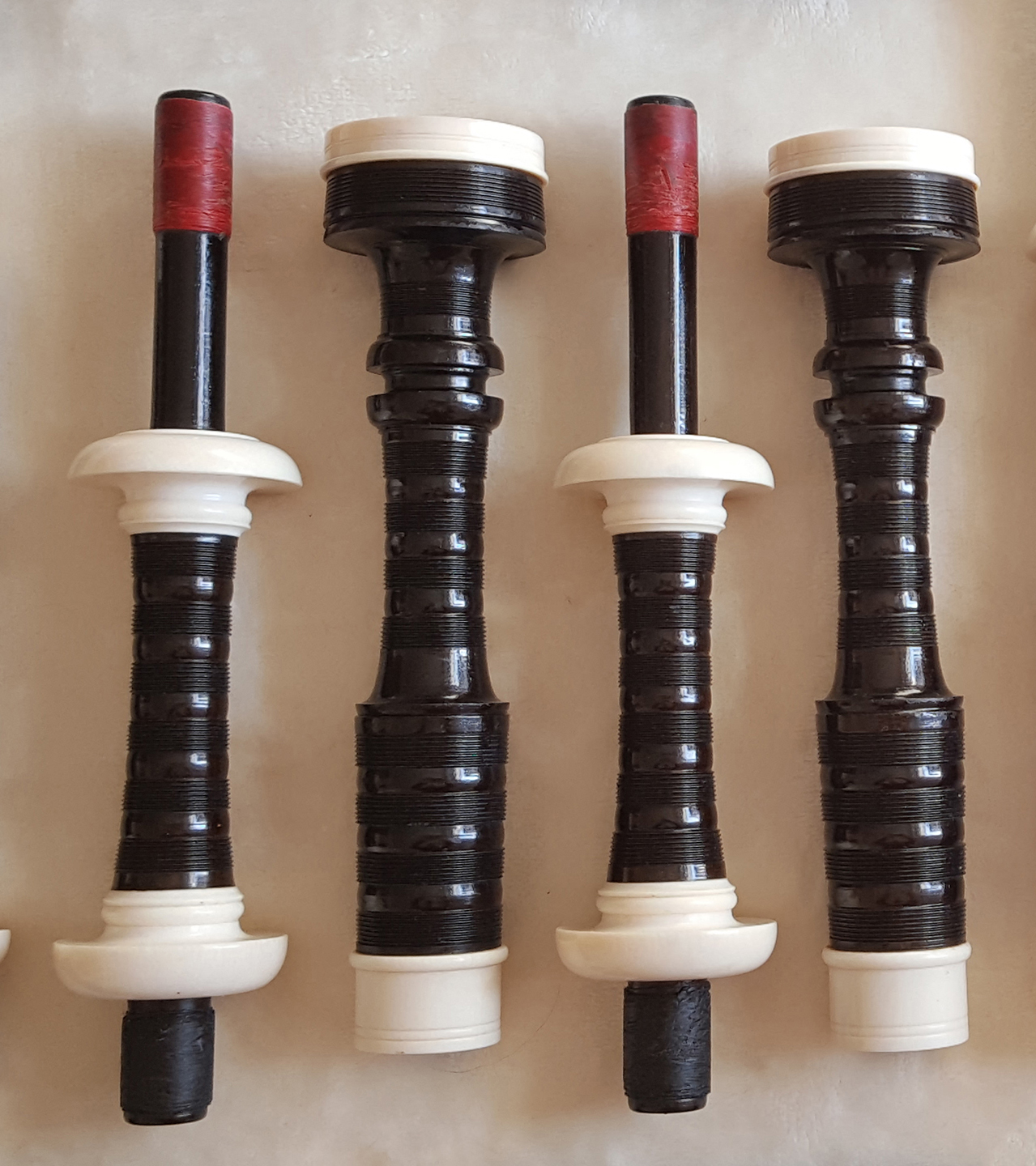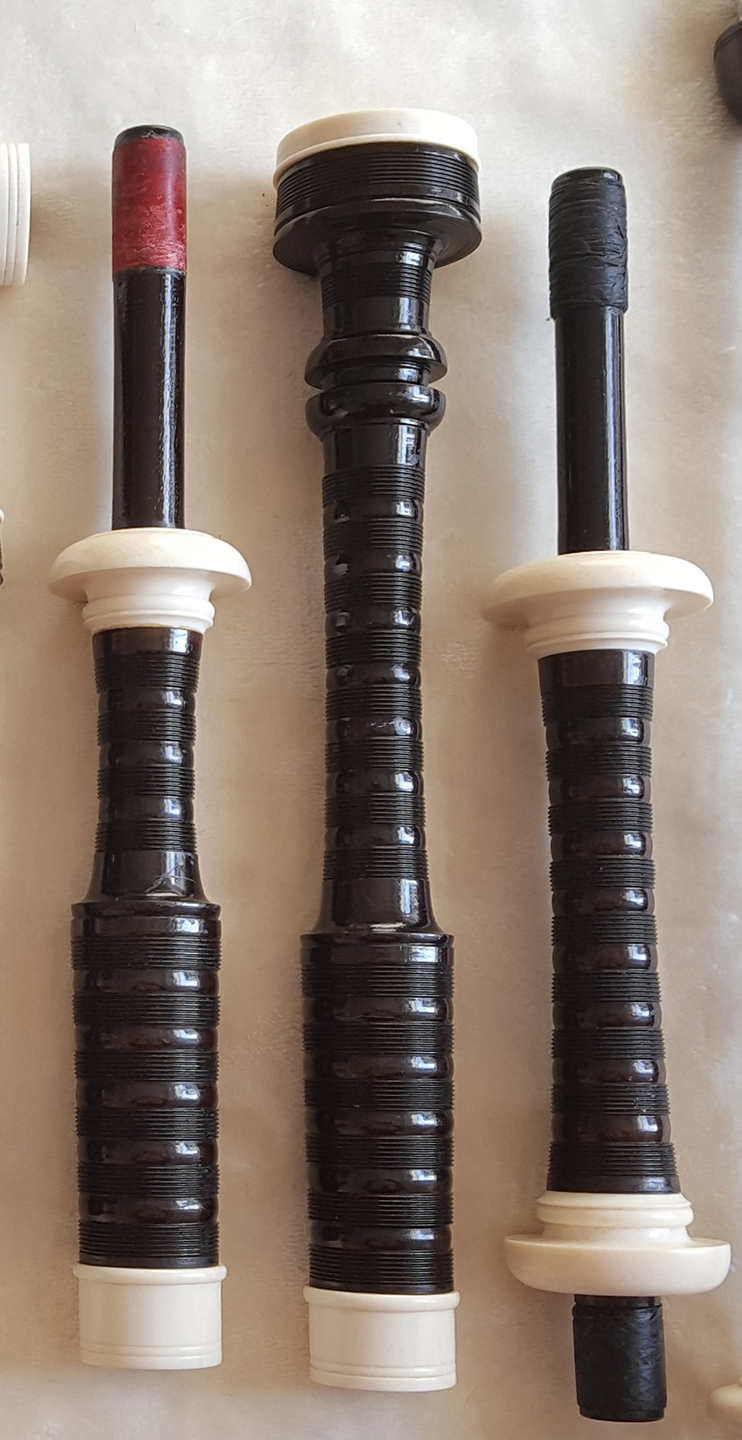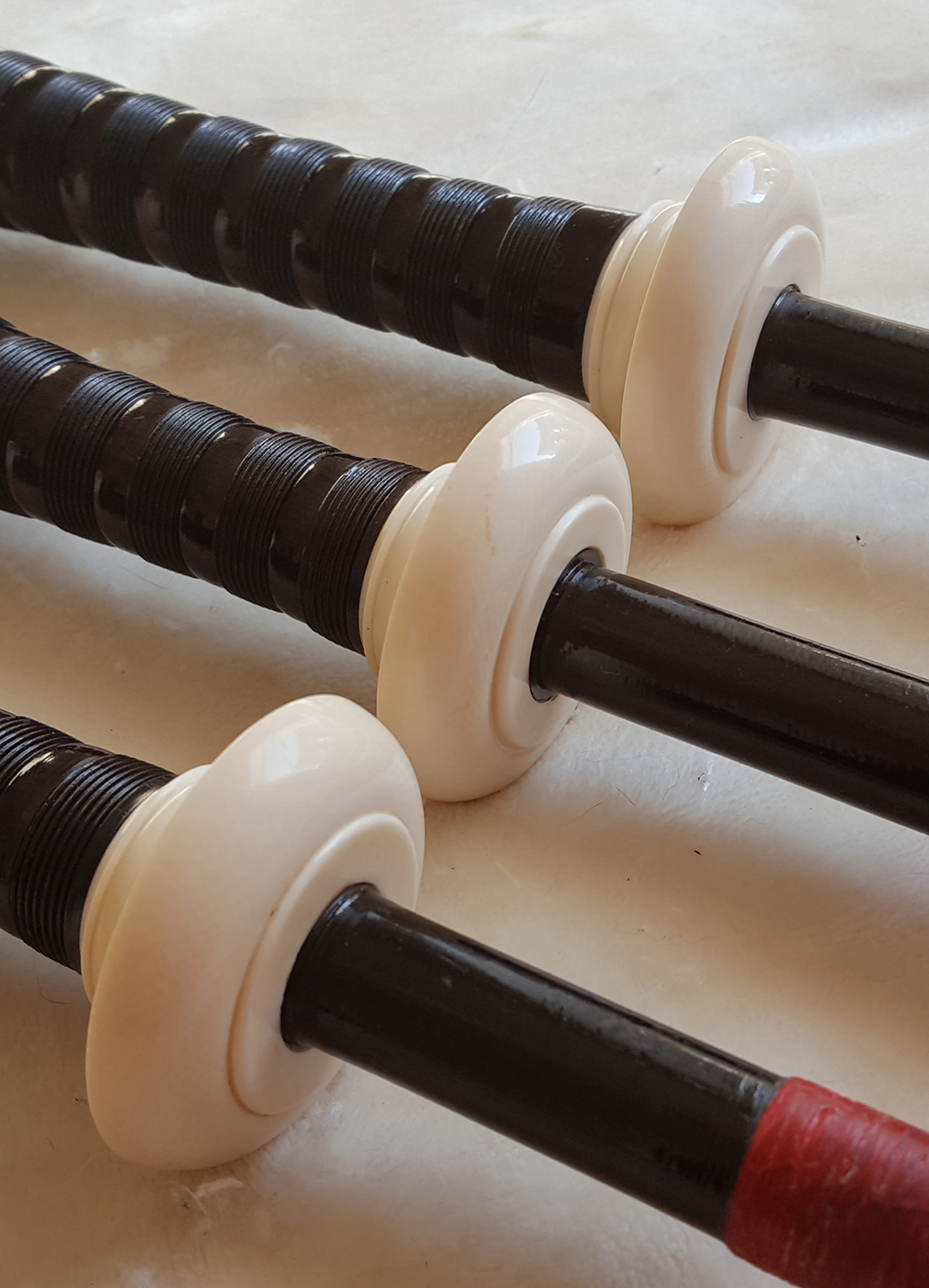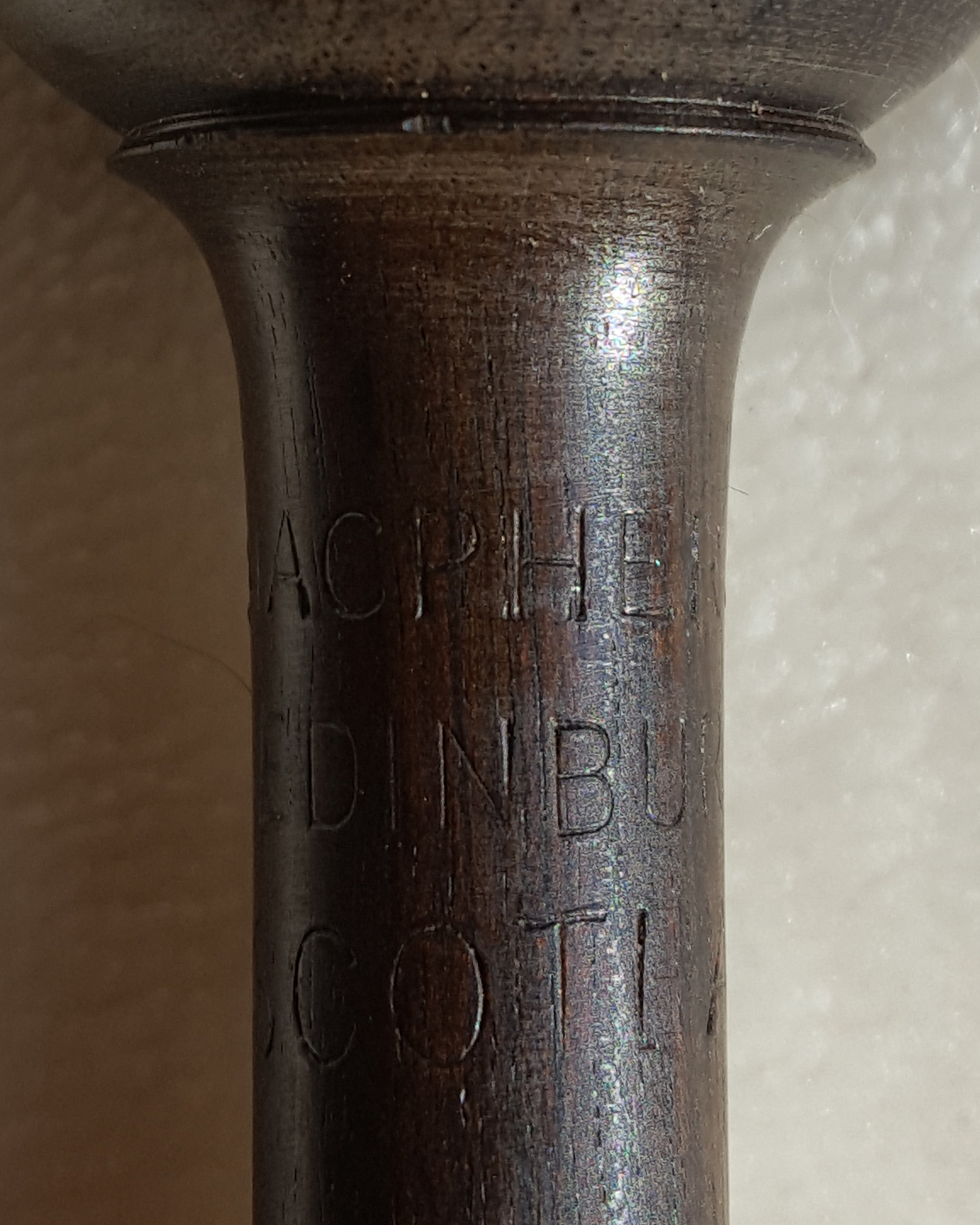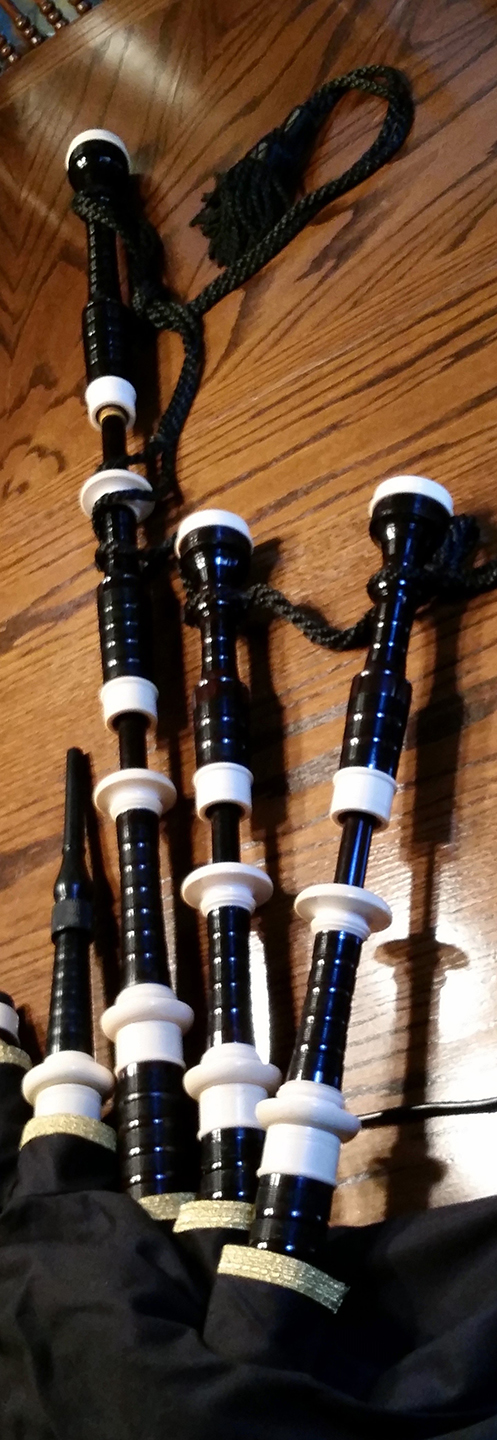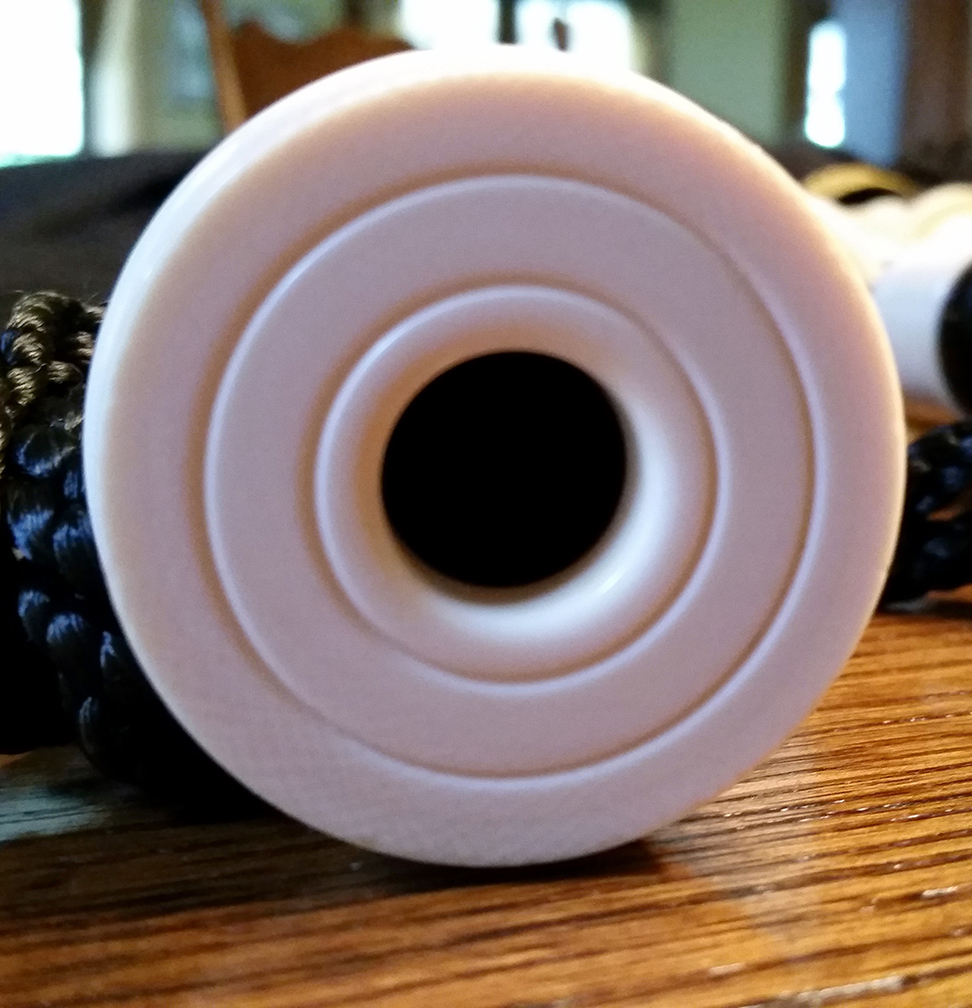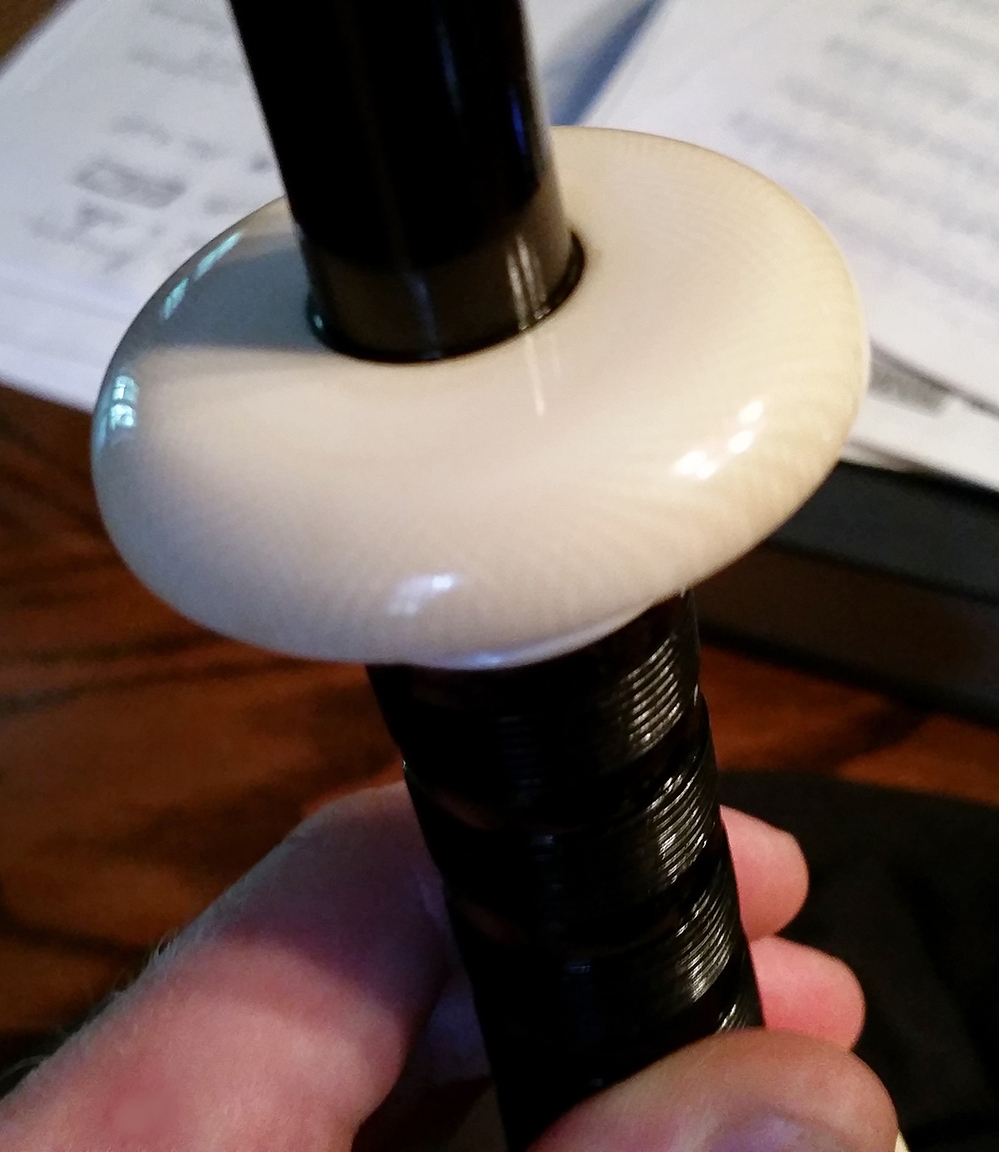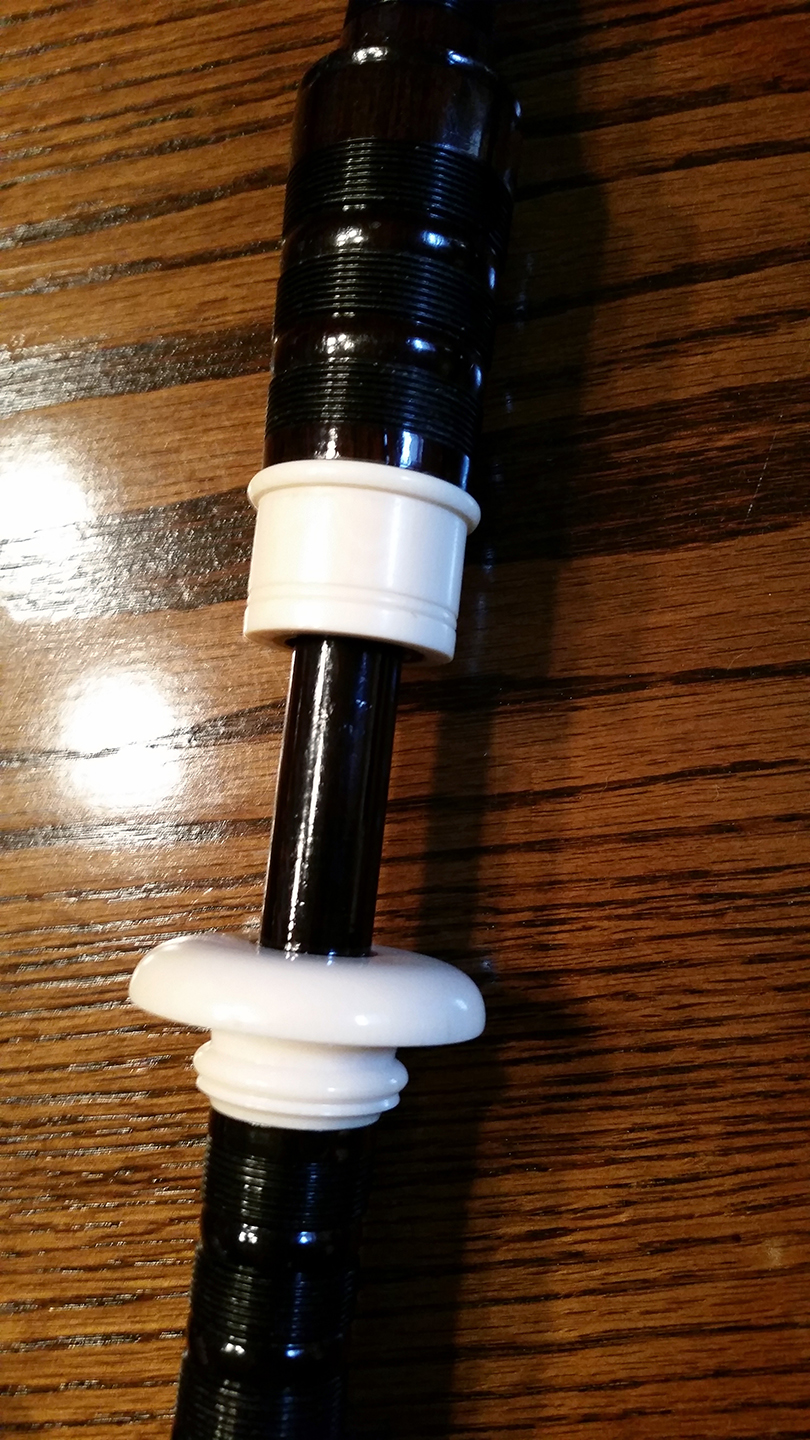Much of this information was provided by Mark Lee (inventor of the famous Rocket Reed) through his conversations with Allistair Sinclair.
William Sinclair was born in Leith in 1875. He was well-regarded as a piper with the Queen's Edinburgh Rifles at the end of the century. He rejoined them at the onset of WWI, later becoming Pipe Major of the 4th/5th Battalion. He died in 1956. He started making bagpipes commercially around 1931 although Allistair recalls his father telling him that the business opened in 1933. He had a close relationship with the MacAllisters of Shotts and Dykehead fame. He also had a close relationship with Hugh MacPherson, actually selling the business to him in 1957 and then buying it back in 1962.
Sinclair is known for their famous chanter, which has been a favorite among top competing pipers and bands for since the 1960's. Prior to 1957, the chanter was stamped "Sinclair Leith" at the top and "Wm Sinclair" in script (his actual signature) and "Scotland," just below the signature, at the bottom. In 1957, William Sinclair Jr. sold the business to Hugh MacPherson and had nothing to do with pipemaking until 1959 when he went to work at the Hugh MacPherson office from 1959 - 1962. From 1962 onwards, chanters were stamped "W. Sinclair & Son."
There are conflicting statements about the TPI. One source claimed Sinclair combed 24 threads per inch and another said it was 26. Both agree that Sinclair used a nine-tooth tool. That means eight teeth are standing up.
In 1962, Allistair, now age 16, joined his father in restarting the business. All new tooling was made and this is the time Allistair thinks that the narrower bores became standard on Sinclair pipes. These were widened again about 1995.
In an unknown year (Allistair can't recall exactly) they stopped cutting the deep scribes in the tops/faces of their solid caps.
Solid caps didn't come on the scene until the early 1950s. Prior to that, the tops had rings and bushes.
From 1933 through 1957 the top of every top projecting mount had a cut-in - the flat part on the top of the projecting mount. Sometime in 1962, the cut-in disappeared.
William Sinclair was born in Leith in 1875. He was well-regarded as a piper with the Queen's Edinburgh Rifles at the end of the century. He rejoined them at the onset of WWI, later becoming Pipe Major of the 4th/5th Battalion. He died in 1956. He started making bagpipes commercially around 1931 although Allistair recalls his father telling him that the business opened in 1933. He had a close relationship with the MacAllisters of Shotts and Dykehead fame. He also had a close relationship with Hugh MacPherson, actually selling the business to him in 1957 and then buying it back in 1962.
Sinclair is known for their famous chanter, which has been a favorite among top competing pipers and bands for since the 1960's. Prior to 1957, the chanter was stamped "Sinclair Leith" at the top and "Wm Sinclair" in script (his actual signature) and "Scotland," just below the signature, at the bottom. In 1957, William Sinclair Jr. sold the business to Hugh MacPherson and had nothing to do with pipemaking until 1959 when he went to work at the Hugh MacPherson office from 1959 - 1962. From 1962 onwards, chanters were stamped "W. Sinclair & Son."
There are conflicting statements about the TPI. One source claimed Sinclair combed 24 threads per inch and another said it was 26. Both agree that Sinclair used a nine-tooth tool. That means eight teeth are standing up.
In 1962, Allistair, now age 16, joined his father in restarting the business. All new tooling was made and this is the time Allistair thinks that the narrower bores became standard on Sinclair pipes. These were widened again about 1995.
In an unknown year (Allistair can't recall exactly) they stopped cutting the deep scribes in the tops/faces of their solid caps.
Solid caps didn't come on the scene until the early 1950s. Prior to that, the tops had rings and bushes.
From 1933 through 1957 the top of every top projecting mount had a cut-in - the flat part on the top of the projecting mount. Sometime in 1962, the cut-in disappeared.
The Sinclair chanter from the 70's through the 90's was preferred by bands worldwide. The top hand was strong and clean. The ground shook. We played them in Clan MacFarlane and again with Niagara Police with great success. The combination of Sinclair chanters and MacAllister reeds was simply outstanding.
Based on the information above, this instrument dates from the early 1950's or earlier.
It's interesting that there are so few William Sinclair bagpipes from the very early days. There seems to be plenty with catalin fixtures and the one-piece cap, however very few reaching beyond the early 1950's.
The set below reflects classic Sinclair styling with the cut-in atop the projecting mounts and the one-piece cap. The catalin has turned a very dark burnt-orange color. This particular style is called "plain-combed" or "flat-combed" as opposed to "beaded and combed".
The set below reflects classic Sinclair styling with the cut-in atop the projecting mounts and the one-piece cap. The catalin has turned a very dark burnt-orange color. This particular style is called "plain-combed" or "flat-combed" as opposed to "beaded and combed".
Very nice William Sinclair bagpipe below with the stamp in script at the bottom of the chanter.
Full Ivory set with cut-in atop the projecting mounts.
Two Sinclair bagpipes, post 1962 but probably pre 1970. The far left is in ivory and the one above is in catalin.
William Sinclair
